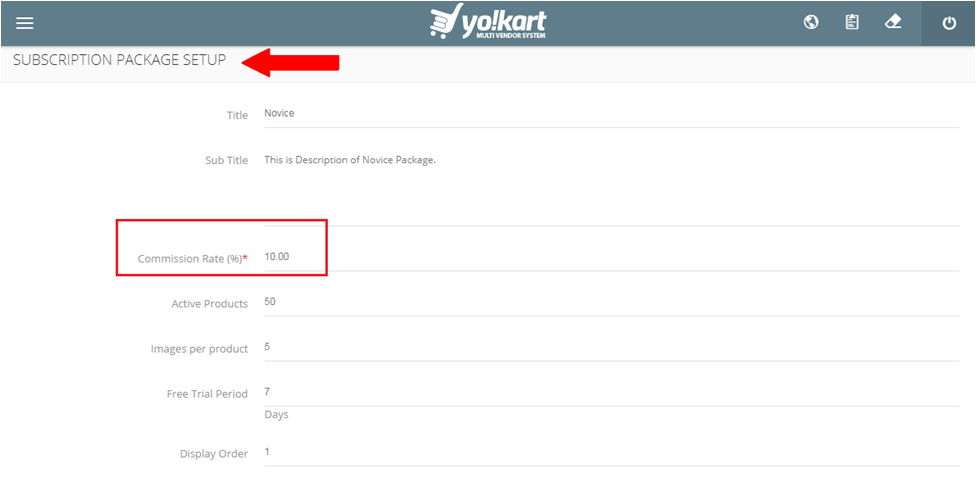Demystifying Ecommerce Marketplaces’ Revenue Models – Commission Vs Subscription
Nothing is static, especially when we talk about technology.
Ecommerce, which came into limelight during the early 2000s, has gone through major transformations over the last two decades. From independent online shops to multivendor marketplaces, from social media sharing to social commerce, the ecommerce ecosystem has gone through numerous innovative iterations.
The ongoing trend, for ecommerce marketplaces, is to bring changes in their legacy business model to provide better services and stand out of the competition. Tweaking the Revenue model has been one such area, which can shift the economic equation of an ecommerce marketplace.
The two prime Revenue models, commission & subscription based, are under constant debate ÔÇô Which one is better? How to employ either one? Is a middle way feasible? ÔÇô There are lots of questions that marketplace owners have. To address these concerns, here we have thoroughly covered the key details of each model, as well as mentioned cases when implementing one is better than the other.
Commission based Revenue model
In terms of adoption, this Revenue model is most popular among marketplaces. The bulk of the marketplace owners prefer this Revenue model as it offers a free tier to sellers to open shop, and earns them substantial commission on every sale. Most big names like Amazon, eBay, Etsy,etc., employ this Revenue model.
The commission Revenue model can further be classified based on varying commission rates for different products & vendors. The 4 major subsets of commission Revenue models are:
Global Commission
Same commission rate for all products & all vendors:
Whether a product costs $20 or $2000, marketplace owner receives the same percentage of the order amount.
- Works best for small marketplace with limited inventory
Category-based Commission
Different commission rates for different categories:
Depending on the price, size, inventory & delivery cost, marketplace owner can set different commission rate for different product categories.
- Recommended for marketplaces with large & versatile product inventory
Product-based commission
Distinct commission rate for an exclusive product:
If a manufacturer is launching its product or product range exclusively on your marketplace, you can set a distinct commission rate (lower than the average) for it.
- This approach can help marketplaces in expanding their market acquisition
Seller/Vendor based commission
Different commission rate based on performance:
To encourage vendors to sell their products on your marketplace more aggressively, you can set sales number milestones beyond which commission rates will be lower than usual.
- Vendor performance based commission can be helpful in a highly competitive market
When the commission-based Revenue model is the right approach?
Commission-based Revenue model is the best way to go when you are sure that vendors on your marketplace are capable of getting lots of order. Further the equation is simple ÔÇô the more they sell, the more you earn.
Recommended Read: Different Ways Your Internet-based Business Can Generate Revenue
Subscription Based Revenue Model
In recent years, some marketplaces have started to adopt a new Revenue model ÔÇô a subscription based listing of products on the marketplace. This is a rather innovative approach that assures marketplace owners a steady source of income, irrespective of how the vendors are performing. It is like renting a shop, but in the online world.
To clarify things a bit more, letÔÇÖs take an example: Marketplace X has three subscription packages namely -Basic, Silver and Gold. The Basic plan can be free to attract small sellers, which allows them to list a limited number of products on the marketplace. Under the Silver plan (paid one), sellers get to list more items and also get some extra features like Analytics. These offerings are further enhanced with the Gold plan.
So, as a sellerÔÇÖs business begins to grow on your marketplace, he can update from the Basic to Silver to Gold plan.
When the subscription-based Revenue model is the best approach?
As mentioned earlier, when there is somewhat less assurance that vendors on your marketplace will perform, implementing a subscription-based Revenue model is a better approach. If your marketplace is selling services or very costly items like heavy machinery, etc., a subscription based Revenue model is the right way to go.
Hybrid Revenue Model
So far, we have understood the technicalities of both ÔÇô commission & subscription ÔÇô Revenue models and the scenarios where one approach is better than the other.
Now letÔÇÖs answer the big question ÔÇô Can both Revenue model be implemented at once to maximize the revenue of a marketplace?
The answer is yes. In fact, many marketplaces are already experimenting with a hybrid Revenue model that includes both of the above-discussed models. And the trick is to offer different commission rates under different subscription plans.
For example, Marketplace X offers three monthly subscription plans Bronze, Silver, Gold costing $, $$, $$$, respectively. Besides different limit on the number of products that can be listed under each plan, there can also be difference in the commission rates. Like for Gold plan subscribers, commission rate can be 5%, for Silver & Bronze, 10% and 15%, respectively.
If implemented in the right manner, the hybrid Revenue model can bring much more revenue to the marketplace owners and also keep sellers glued to the platform.
Also Read: 5 Ecommerce Website Features to Keep Sellers on Your Marketplace Happy
Conclusion
As a startup marketplace owner, the Revenue model should be a huge subject of discussion for you. There are various kinds of Revenue models and each one of them has its own pros and cons (as discussed in the post). Eventually, it all boils down to your targeted sellers and market dynamics that which Revenuemodel you should choose at any given point of time.
To have that level of flexibility in your business model, you need an equally flexible ecommerce platform that makes switching from one Revenue model to another, or mixing both, a feasible task.
YoKart is one such ecommerce marketplace platform that allows business owners to use a hybrid Revenue model.

Due to its flexibility and customization, marketplace owners can also use either commission only or subscription only Revenue model. This provides the much-needed flexibility to change the revenue stream as per market dynamics.



